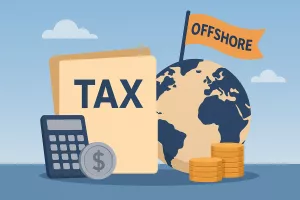When it comes to retirement planning, two common types of employer-sponsored retirement plans are the 401(k) and the 403(b). While both offer tax-advantaged ways to save for retirement and share many similarities, they are designed for different types of employers and have distinct features that cater to specific employee groups. Understanding the key differences between a 401(k) and a 403(b) is crucial for maximizing your retirement savings and choosing the plan that best suits your financial goals. What is a 401(k)? A 401(k) is a retirement savings plan offered by private-sector employers, such as corporations, businesses, and for-profit organizations. Named after the section of the U.S. tax code that governs it, a 401(k) allows employees to contribute a portion of their paycheck to a tax-deferred account, where it can grow over time through investments in stocks, bonds, mutual funds, and other financial instruments.
Key Features of a 401(k)
- Eligible Employers: Typically offered by private-sector companies, ranging from small businesses to large corporations.
- Contribution Limits: In 2024, employees can contribute up to $23,000 annually to their 401(k) plan, with an additional $7,500 catch-up contribution allowed for those aged 50 and older.
- Employer Matching: Many employers offer matching contributions, where they match a percentage of the employee’s contributions, enhancing the potential for growth.
- Investment Options: 401(k) plans usually offer a wide range of investment choices, including mutual funds, target-date funds, and index funds.
- Tax Advantages: Contributions are typically made on a pre-tax basis, lowering taxable income, though Roth 401(k) options, which involve after-tax contributions with tax-free withdrawals, are also available.
- Required Minimum Distributions (RMDs): Starting at age 73, participants must begin taking RMDs from their 401(k), unless they are still employed and meet certain criteria.
Who Typically Uses a 401(k)?
401(k) plans are widely used by employees in the private sector, including those working in corporations, small businesses, and other for-profit organizations. They are designed for workers who have access to employer-sponsored retirement plans with the potential for employer matching contributions.
What is a 403(b)?
A 403(b) is a retirement savings plan designed specifically for employees of public schools, nonprofit organizations, and certain tax-exempt entities. Like a 401(k), it allows employees to contribute a portion of their salary to a retirement account with tax advantages, but it is governed by slightly different rules and is tailored to meet the needs of specific employment sectors.
Key Features of a 403(b)
- Eligible Employers: Typically offered by public schools, hospitals, churches, and tax-exempt organizations under IRS Code 501(c)(3).
- Contribution Limits: In 2024, the contribution limits are the same as a 401(k), with an annual limit of $23,000 and an additional $7,500 catch-up contribution for those aged 50 and older.
- Catch-Up Contributions for Long-Term Employees: Employees with 15 years of service at the same employer may be eligible for an additional catch-up contribution of up to $3,000 per year, though limits apply.
- Investment Options: Historically, 403(b) plans were limited to annuities and mutual funds, but today they offer more diverse investment options, although they might still be narrower than those in a 401(k).
- Employer Contributions: While employer matching is less common than in 401(k) plans, some organizations do offer matching contributions.
- Tax Advantages: Like a 401(k), 403(b) contributions can be made on a pre-tax basis, or through a Roth option for tax-free withdrawals in retirement.
Who Typically Uses a 403(b)?
403(b) plans are most commonly used by employees of public educational institutions, nonprofits, religious organizations, and other tax-exempt entities. These plans cater to workers in sectors that traditionally focus on public service or nonprofit work.
Key Differences Between a 401(k) and a 403(b)
While both 401(k) and 403(b) plans offer tax-deferred growth and are structured similarly, several differences set them apart:
1. Eligibility and Employer Type
- 401(k): Offered by private-sector, for-profit employers, including corporations, businesses, and small companies.
- 403(b): Available to employees of public schools, nonprofits, religious organizations, and other tax-exempt entities.
2. Investment Options
- 401(k): Typically offers a broader range of investment options, including mutual funds, target-date funds, index funds, and even self-directed brokerage accounts.
- 403(b): Historically limited to annuities and mutual funds, though today they offer more options. However, investment choices may still be more limited compared to a 401(k).
3. Employer Matching Contributions
- 401(k): Employer matching is common, with many companies offering to match a percentage of employee contributions, often up to a specified limit.
- 403(b): While employer matching is available in some cases, it is less common in the nonprofit and public sectors.
4. Administrative Complexity
- 401(k): More heavily regulated and subject to nondiscrimination testing to ensure benefits are fairly distributed among all employees, including those with lower incomes.
- 403(b): Subject to fewer administrative requirements and less rigorous testing, making them easier for smaller organizations or nonprofits to manage.
5. Catch-Up Contributions for Long-Term Employees
- 401(k): Offers standard catch-up contributions for employees aged 50 and older.
- 403(b): In addition to standard catch-up contributions for those over 50, long-term employees with 15 or more years of service at the same employer may qualify for an additional catch-up contribution of up to $3,000 per year.
6. Plan Costs and Fees
- 401(k): Plan costs can vary widely, especially in smaller businesses. Larger employers often have the leverage to negotiate lower fees.
- 403(b): Plan fees can be higher, particularly in plans with limited investment choices, like annuities, which tend to have higher fees than mutual funds.
How to Choose Between a 401(k) and a 403(b)
For most people, the choice between a 401(k) and a 403(b) depends on their employer, as the type of plan offered is usually determined by the organization. However, for those who have access to both options (for example, in dual-employment scenarios), factors like employer matching, investment options, and fees should guide the decision.
Factors to Consider
- Employer Matching Opportunities: If one plan offers a significantly better employer match, that could enhance your retirement savings more effectively.
- Investment Choices: Consider which plan offers investment options that align with your risk tolerance and retirement timeline.
- Fee Structures: Evaluate the cost of each plan, including administrative fees, fund expense ratios, and any additional charges.
- Plan Flexibility: Some plans might offer additional services or features such as financial planning tools, investment advice, or online account management.
Practical Tips for Maximizing Benefits
- Take Advantage of Employer Matching: If your employer offers a match, contribute at least enough to get the full match. It’s essentially free money added to your retirement fund.
- Review Your Investment Portfolio Regularly: Ensure your investments are aligned with your retirement goals and adjust as needed based on market conditions and personal circumstances.
- Consider Roth Options: If available, Roth accounts can offer tax-free withdrawals in retirement, providing tax diversification.
- Keep an Eye on Fees: High fees can erode your investment returns over time. Opt for low-cost investment options where possible.
- Stay Informed: Continuously educate yourself on retirement planning and investment strategies to make informed decisions.
Common Mistakes to Avoid
- Not Contributing Enough to Get Employer Match: Missing out on employer match is like leaving money on the table.
- Ignoring Plan Fees: High fees can significantly reduce your retirement savings over the long term.
- Failing to Diversify Investments: Relying too heavily on a single type of investment can increase risk.
- Neglecting to Update Contributions: As your income increases, your contributions should too. Consider setting up automatic increases annually.
- Overlooking Catch-Up Contributions: If you’re 50 or older, take advantage of catch-up contributions to boost your retirement savings.
Expanding Your Retirement Strategy
Combining Retirement Accounts
If you have the opportunity to contribute to both a 401(k) and a 403(b), you can maximize your retirement savings by utilizing both accounts. This strategy can be particularly beneficial if you are employed by organizations offering different plans, allowing you to benefit from the features of each.
Understanding Tax Implications
Both 401(k) and 403(b) plans offer significant tax advantages, but understanding the tax implications of each can help you strategize more effectively. For instance, contributing to a traditional plan reduces your taxable income now, while a Roth option requires after-tax contributions but offers tax-free withdrawals in retirement.
Planning for Early Retirement
If early retirement is part of your plan, consider how each type of account fits into this goal. Some accounts might have penalties for early withdrawal, so understanding these rules can help you avoid unexpected costs.
Seeking Professional Advice
A financial advisor can provide personalized advice tailored to your financial situation and retirement goals. They can help you navigate the complexities of retirement planning, suggest optimal contribution levels, and assist in selecting the right investment mix.
Conclusion
The primary difference between a 401(k) and a 403(b) lies in the type of employer offering the plan. A 401(k) is typically offered by private-sector, for-profit businesses, while a 403(b) is designed for employees of public schools, nonprofits, and tax-exempt organizations. Despite these differences, both plans provide similar tax advantages, contribution limits, and opportunities for retirement savings. Understanding the unique features of each plan can help you make informed decisions about your retirement savings strategy, ensuring that you maximize employer contributions, minimize fees, and choose investments that align with your long-term financial goals.
By carefully considering the options and tailoring your approach based on the specific attributes of each plan, you can create a robust retirement strategy that supports your financial well-being into the future. Whether it’s taking full advantage of employer contributions, choosing the right investment options, or managing costs effectively, each decision can significantly impact your financial security in retirement.




